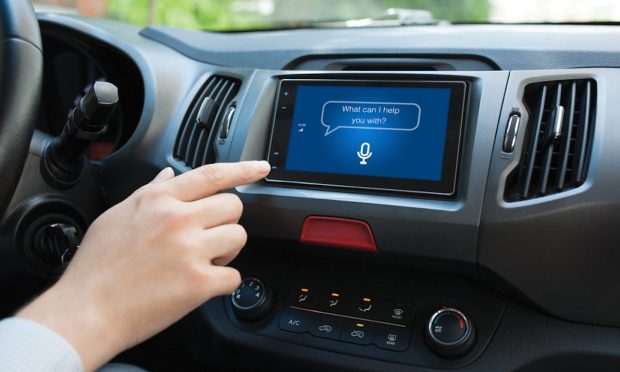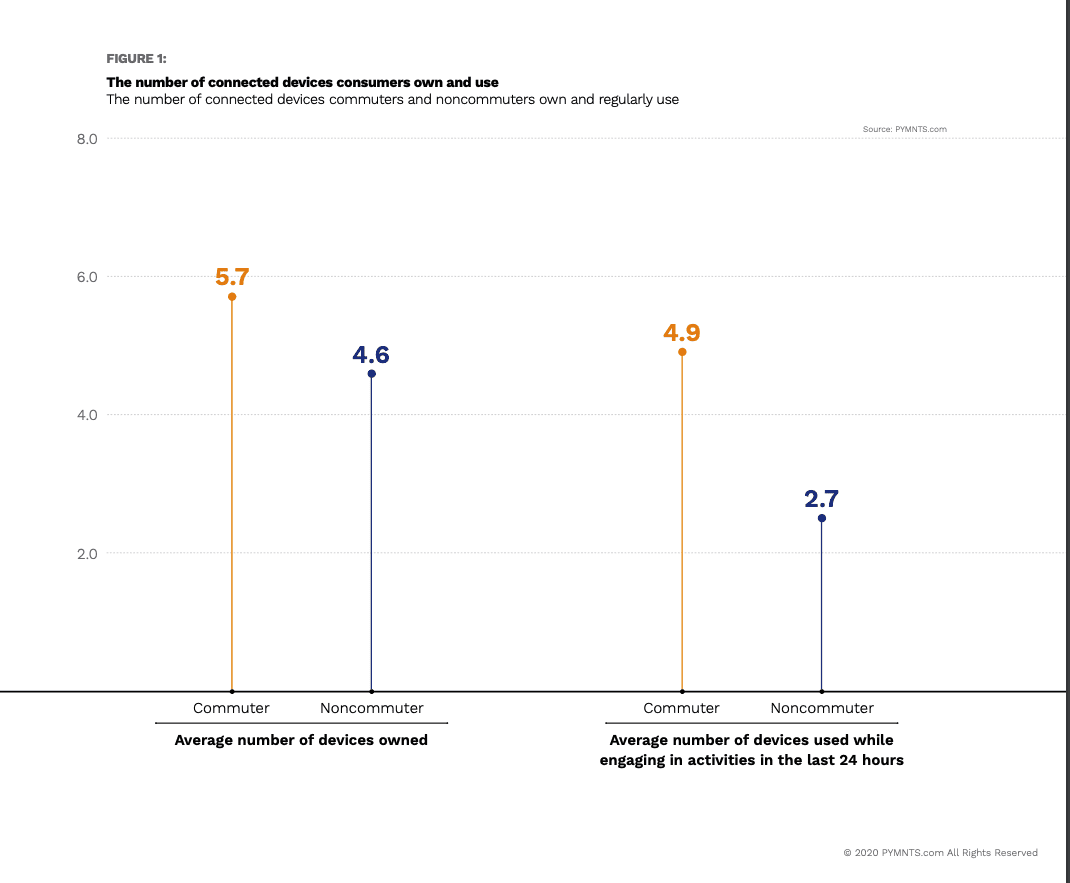Remember Commuters? They Still Want To Be Connected While They Drive

As drivers hit the road over the long holiday weekend to celebrate Labor Day and the waning days of summer, mobile digital devices in connected cars are set to play a central role in those travel plans.
According to PYMNTS research, consumers who have grown accustomed to the convenience of connected devices in their homes and offices now expect the same level of seamless service while in their cars and trucks.
Read more: How We Will Pay
In fact, the more people commute, the more connected they want to be. In the How We Will Pay survey of more than 9,500 consumers, PYMNTS revealed a growing gap between commuters and noncommuters in the manner and number of connected devices they own.
Better, Faster, More Connected
Unsurprisingly, the more time someone spends in the car, the more connected they want to be, the data showed. In short, consumers who commute to and from work own more connected devices and tend to use more of those devices per day compared to their work-from-home counterparts.
Specifically, the average commuter owns about 80% more connected devices than their non-commuting counterparts, and actually uses five of those six connected devices each day to perform different tasks and activities.
 Commuters Are More Interested in Connected Experiences
Commuters Are More Interested in Connected Experiences
Commuters like using their connected devices and apps to multitask by browsing and shopping while traveling to and from work, but they’re also interested in other things. Seventy percent of commuters say they are “very” or “extremely” interested in new connected experiences, compared to 46% of noncommuters.
When it comes to services, 39 percent of on-the-go consumers said they were either “very” or “extremely” interested in using voice assistants to pay their bills, versus just 16% of noncommuters.
Those who drive to and from work are often interested in new connected shopping experiences, such as using augmented reality (AR) to help them shop or speaking with sales associates via live video stream.
Commuters Use Voice Assistants, Ask for Gas Stations
Other research, the PYMNTS Digital Drive Report, showed that internet usage during commutes is steadily increasing. Nearly three-quarters (73 percent) of commuters said they connected to the internet while driving, up from two-thirds (66 percent) of commuters who did so during the same period the previous year. That puts the number of connected commuters at roughly 99 million.
Read more: PYMNTS Digital Drive Report
The study also found that 53.3% of consumers use voice assistants to connect while driving. Among them, 47.2% say they are most interested in using those voice assistants to find gas stations.
There’s Room for Growth
While 90% of consumers now own a smartphone, only 30% own a connected car. It’s a statistic that reflects the comparatively large growth potential of the automotive tech subsector.
Of course, the ongoing global semiconductor shortage has placed a bump in the road. When COVID-19 temporarily shut down car-making operations, automakers ordered fewer chips. Then, when car sales bounced back, the automakers’ stocks of semiconductors quickly dried up and their factories ground to a halt again. With new cars at a premium, prices for used cars leaped to a record high, up over a third from where they stood at the same time the previous year.
More details: Threat of Chip Shortages Worry Connected Economy Companies
Despite these short-term supply challenges, the long-term connected car story remains on track and trending upward. Whether consumers are driving to and from work or simply traveling for pleasure over the Labor Day weekend, their desire to be connected and take advantage of an array of digital conveniences is strong.
